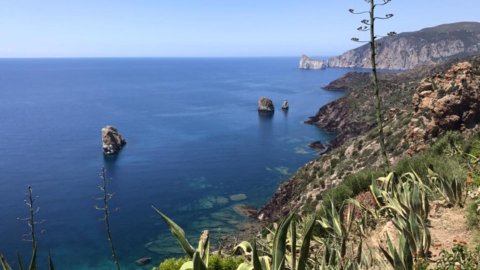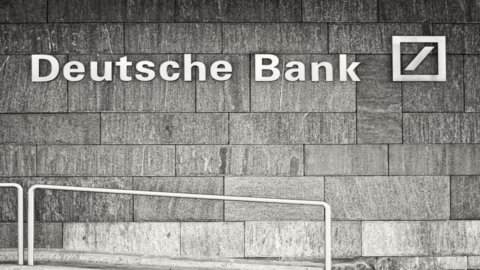According to a recent report from the Intesa Sanpaolo Studies and Research Department, in 2015, with a growth of 2,2%, Croatia came out of the long recession that began in 2008 following the international financial crisis, the impact of which resulted in a loss of GDP of about 13% from 2008 to 2014 (with the contracted industry by 26% and services by over 7,0%). The economic recovery started from foreign demand, especially for tourism, which already at the end of 2014 had provided a positive net contribution to GDP. Afterwards, the cyclical phase strengthened on the one hand thanks to domestic demand for private consumption, favored by the reduction in the unemployment rate and the increase in disposable income due to the reduction in the tax burden, and on the other thanks to the demand for investments. The latter factor, after the country's exit from the excessive deficit procedure and the release of European funds, continued to support GDP growth in 2016 (3,0%) and is expected to continue to be the main driver growth also in the two-year period 2017-2018. In particular, GDP grew by 2017% in the first half of 2,7, while growth of 2,9% is forecast for the end of the year. Here then is that the GDP trend is expected to remain robust also in 2018 at around 2,8%..
The monetary policy objective of the Croatian Central Bank (HNB) is to contain inflation also through interventions in the currency market to stabilize the Kuna/Euro exchange rate. The absence of inflationary pressures has long led the CNB to stimulate liquidity in the economic system: in May 2012, the compulsory reserve ratio was reduced from 15% to 13,9%, subsequently at the end of 2014 it was reduced to 12%, value still outstanding. In recent months, the exchange rate has remained substantially stable, fluctuating around 7,5 kuna per euro. While the kuna will remain subject to slight volatility in the short term, analysts forecast substantial stability in the nominal exchange rate over the medium/long term. In August, the growth rate of consumer prices rose from 0,8% to 1,0%, bringing average inflation from January to 1,1%, while core inflation, that is, excluding the more volatile components such as energy was 1,4%. The low inflation of international energy prices is having an impact on the contained dynamics of consumer prices which, although recovering, is continuing beyond expectations. Analysts predict that the growth in consumer prices, although increasing, will remain moderate in the coming months due to the upward pressure on consumer prices generated by the progressive consolidation of the economy. For 2017 average inflation is expected to be 1,1% and then rising to 1,4% in 2018.
In 2016, the public deficit corrected significantly, falling to 0,8% thanks to the acceleration of the GDP and the implementation of the Convergence Plan agreed with the European Commission, providing for an increase in revenue through the increase in excise duties on fuel and tobacco and a reduction in budget expenditure through the containment of expenditure, as well as through the reduction of social benefits. Thanks to the correction of the public deficit, the country has exited the excessive deficit procedure that was opened in 2014. In the projections of the European Commission (EC), the public deficit is slightly up to 1,1% in 2017 due to the tax reform which, according to EC estimates, will have a direct negative impact on budget revenues of 0,6% of GDP due to the lower tax burden on household incomes, but which will however be partly offset by the acceleration of nominal GDP to 4,2% (from 4,0%). In this scenario, in 2018 the deficit will be substantially stable at around 1,0%. With a deficit below 1,0% of GDP, and assuming solid long-term nominal GDP growth of around 4,8%, government debt, currently above 80% of GDP, could partially correct itself and converge in the long term to the Maastricht benchmark, stabilizing at 60%.
External debt rose from 84,3% of GDP in 2008 to 101% in 2015 due to the large current account deficits of previous years. Subsequently, in 2016 debt to GDP fell to 89% thanks to the acceleration of nominal GDP and the reduction of both public (-1,3%) and private (-3,0%) external debt. For the current year, a further correction of around 80% is estimated, favored above all by the strong expansion of the GDP. Both the ratio between official reserves and short-term external debt alone and the reserve cover ratio, i.e. the ratio between foreign exchange reserves forecast for 2017 and foreign financial requirements, are expected to exceed one. The current account balance moved into positive territory in 2013 (1,0% of GDP) and improved in the following years mainly due to the increase in exports, especially on the services side. In 2016 the current account surplus, although down to 2,5% from the peak of 4,7% in 2015, was still significant and also last year the financial account deficit, due to the portfolio investment deficit, weighed negatively on the balance of payments. In the first half of the current year, the trade balance was negative, determining together with the income account the current deficit. However, it is expected that in the second half of the year, due to the seasonal effect, the trade balance could become positive as well as the current one (3,7% of GDP in analysts' forecasts). Despite the positive expected net flow for foreign direct investment, the financial account may still be in deficit at the end of 2017 due to the net deficit in portfolio investment.





